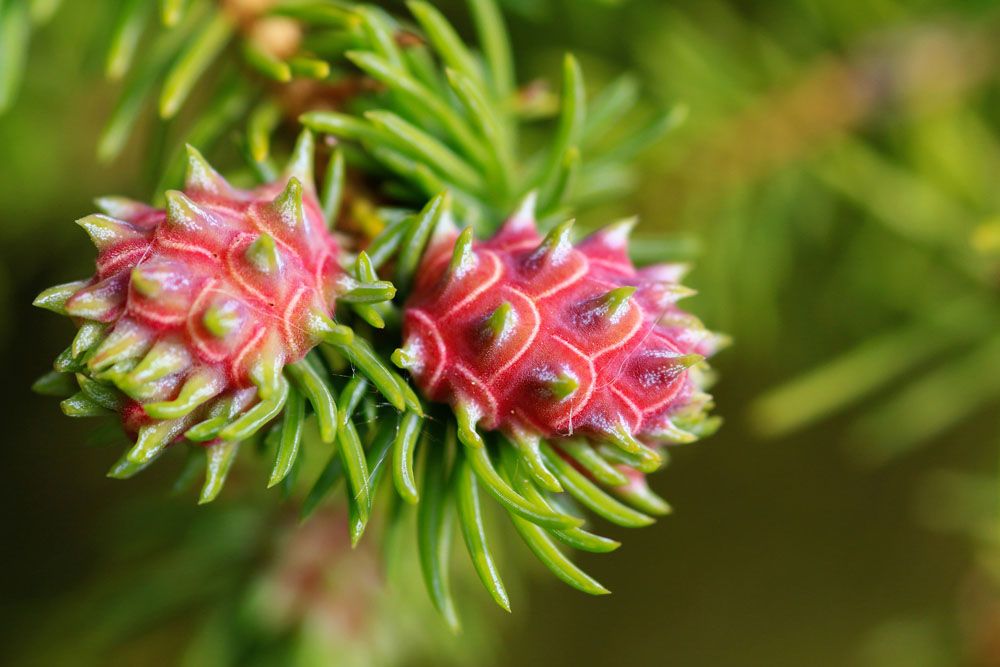
Cooley Spruce Gall Adelgid – Adeleges cooleyi
Cooley Spruce Gall Adelgid (Adeleges cooleyi)
Latin Name: Adeleges cooleyi (Gillette)
Common Name: Cooley Spruce Gall Adelgid
Appearance:
The Cooley spruce gall Adelgid is a little black bug with a soft body that can be wingless or winged.
- To suck sap from its host, it has piercing-sucking mouthparts.
- The pineapple- or pinecone-shaped swelling or gall on spruce trees indicates its existence. This gall only appears at the beginning of fresh growth.
- Galls are green or purple in hue, and when they dry up in the summer, they turn brown. They may be mistaken for cones once dried.
Hosts plants: Spruce (primary host) and Douglas fir (secondary host)
Territory: The Cooley spruce gall adelgid is native to North America, including Canada, and is found across the Rocky Mountains’ northern and central regions.
Damage caused by Cooley Spruce Gall:
Adelgids (Adelges abietis and Adelges cooleyi) with their sucking mouthparts that feed on plant liquids destroy most spruce trees. Generating an irritation that causes plant tissue to grow into cone-like galls typical of the aphid species involved in form and shape, Infestations continue to disfigure ornamental and Christmas trees, weakening them and rendering them vulnerable to other pest species.
Description about Trunk and branch borers:
The most devastating pests of ornamental trees and shrubs are wood-boring insects. The larvae (immature stages) of various moths and beetles are the most common borers. Plants that are sensitive to this develop girdling, branch dieback, structural weakness, decline, and ultimately death due to this. Plant pathogens can also enter through infestation locations. The most common borers that attack woody ornamentals are clearwing and flathead borers. The groups differ in their behaviors and host preferences, influencing how pesticides are used to control them. The first line of defense against borer injuries is proper watering and maintenance. Borer-infested trees might also benefit from good cultural techniques that help them to withstand borer damage. The keys to managing these pests are maintaining plants healthy and, if required, treating at insecticide-vulnerable times of the year.
Life History and Habits:
The immature females of the Cooley spruce gall adelgid overwinter. These overwintering forms on spruce can be found in twig bark cracks, right below the buds or around the base of the buds. Overwintering immature feed on the sap in March and April and eventually enlarge. As they get older, they emit lengthy, waxy filaments all over their bodies. Each female generates a cluster of 150–200 eggs within this clump shortly before bud break. As the spruce buds open, the brownish nymphs emerge from the eggs. They burrow into the bud and start eating on the elongating needles right away.
